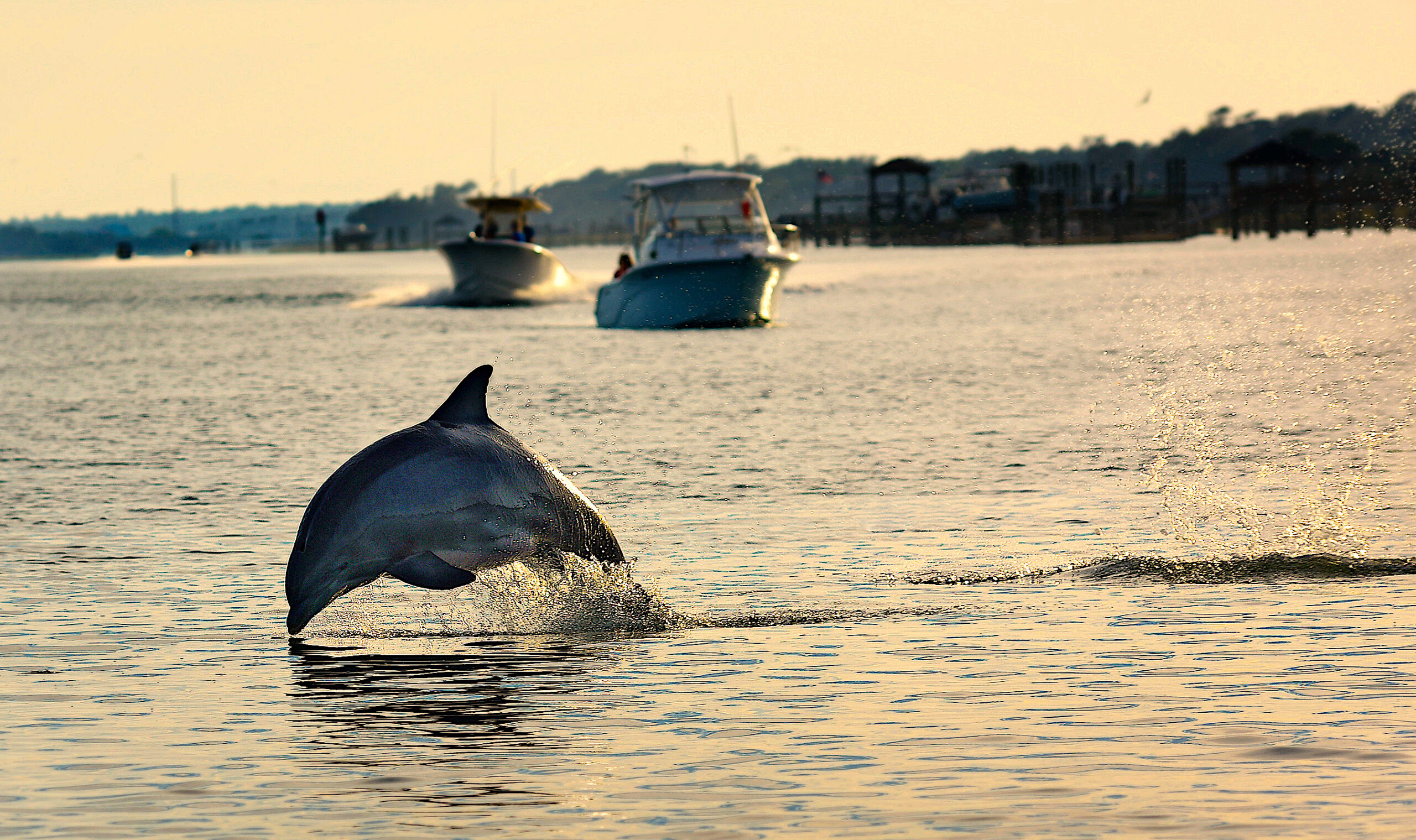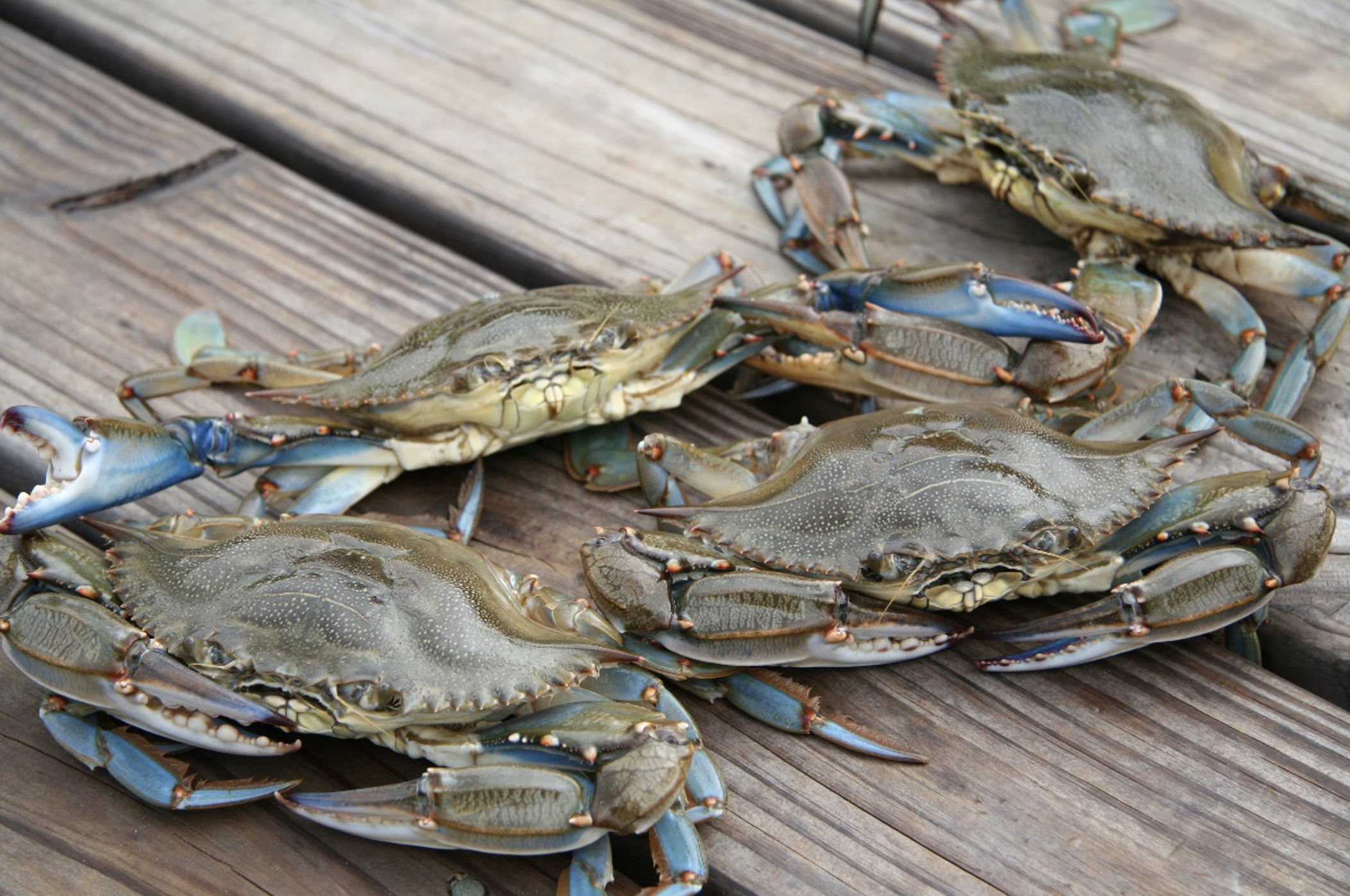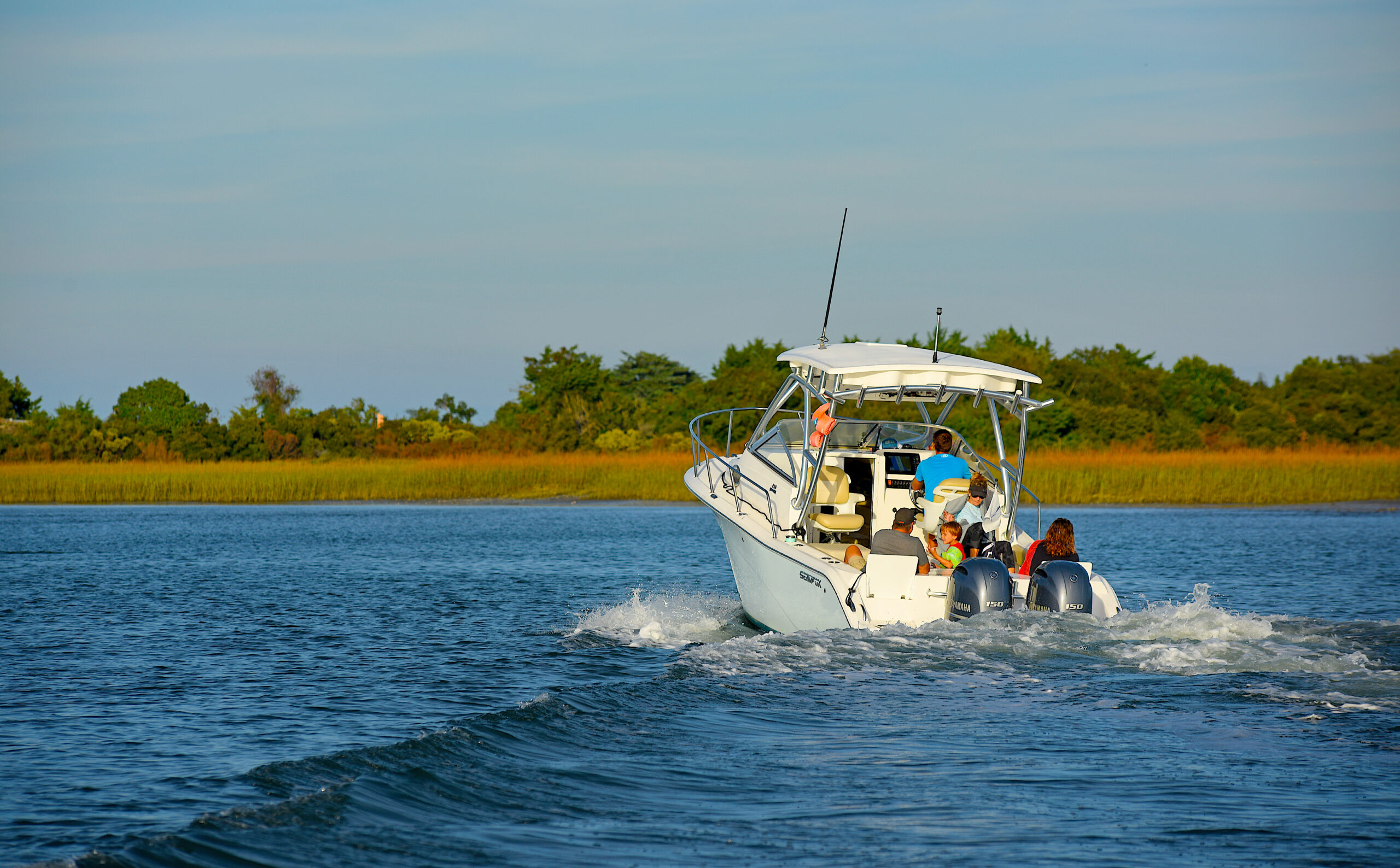Where Do Dolphins Live Year-Round in NC Waters?

These animals may cluster together differently than we thought.
Many vacationers to the Outer Banks have been lucky enough to spot dolphins in the sounds that separate the islands from the mainland. Researchers estimate that 500 dolphins migrate to the Outer Banks to give birth during May through September. When autumn arrives, many of the dolphins migrate southward.
But what about the year-round residents? What does that population of dolphins look like?
Research Need
The northernmost boundary for year-round-resident bottlenose dolphins once was believed to be Beaufort, North Carolina — but research has shown two estuarine resident populations, with a mixing area between the two around Beaufort.
In estuarine and coastal ocean habitats, dolphins face numerous threats, such as fishing gear, vessel strikes, environmental contaminants, and more. Understanding where clusters of dolphins live throughout the year so we can estimate their populations will inform management and conservation.
What did they study?
Researchers have developed techniques for identifying individual dolphins by the scars and notches acquired on their dorsal fins — a process called photo-identification (Photo-ID).
Three observers photographed all the dolphins they saw, noting the number of barnacles on dorsal fins, which sheds light on habitat use. There are several factors that indicate whether dolphins are migratory — for instance, if individual dolphins have a medium to heavy barnacle load, or if a group of dolphins as a whole has barnacles on more than 70% of their fins.
The research team compared photographs from individually identified dolphins to a long-term Photo-ID catalog at the NOAA Beaufort Laboratory in North Carolina. This catalog includes photographs of 2,423 different dolphins from Cape May, New Jersey, to Georgetown, South Carolina, from 1995 to 2018.
What did they find?
The scientists identified 547 distinct dolphins — nearly three times higher than the 2006 estimate of fewer than 200.
The long-term Photo-ID catalog yielded matches with 228 dolphins. Of those, 65 had been included in the 2013 abundance estimate for the northern North Carolina estuarine stock.
Anything else?
To look at social structure, the team examined 95 individual dolphins for which they had repeat sightings. Three large clusters showed general differences in the locations of their primary sightings: the Pamlico Sound cluster (northern and estuarine), the Beaufort cluster (central), and the southern North Carolina cluster.
Barnacle infestations, a possible indicator of cluster membership based on habitat use, differed among clusters but did not define them.
So what?
These results indicate that the structure of estuarine bottlenose dolphins in North Carolina is more complex than previously defined. The three primary clusters of resident dolphins were inconsistent with current designations.
New approaches are necessary to determine how best to obtain reliable estimates of dolphin populations — and to understand how human activity influences the mortality of dolphins.
Reading
Hohn, A.A., Gorgone, A.M., Byrd, B.L., Shertzer, K.W., and Eguchi, T. (2022) Patterns of association and distribution of estuarine-resident common bottlenose dolphins (Tursiops truncatus) in North Carolina, USA. PLoS ONE 17(8): e0270057. https://doi.org/10.1371/journal.pone.0270057
Internal NOAA National Marine Fisheries Service (NMFS) funding through the NMFS Office of Protected Resources provided funding for this work.
By Sara Mirabilio.
Lead photo credit: NC State Photos.
The text from Hook, Line & Science is available to reprint and republish at no cost, but only in its entirety and with this attribution: Hook, Line & Science, courtesy of Scott Baker and Sara Mirabilio, North Carolina Sea Grant.
- Categories:



